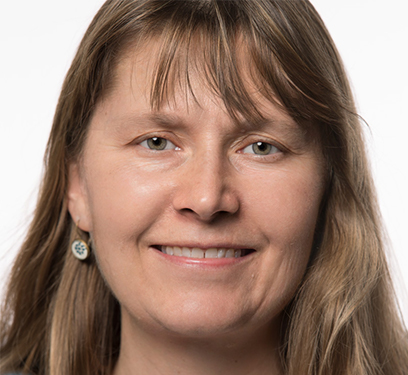Kate Scholberg - How to see a star explode from underground
Talk details
- Date: 24 September 2023
- 1 p.m. (ET)
- Location: Zoom
- Video recording
Talk abstract
From the speaker:
“When a massive star reaches the end of its life, it collapses and then explodes as a supernova, which can shine as brightly as an entire galaxy for a brief time. Right before the explosion, the collapsed star emits a brilliant (but almost invisible) flash of neutrinos. Neutrinos are ghostly particles that can fly through matter as if it were transparent. I will describe how we can catch some of these neutrinos in vast underground detectors. The neutrinos we observe will give us an early warning of the impending supernova, and will allow us to see what's happening inside the exploding star and possibly witness the birth of a black hole.”
Presenter
Kate Scholberg
Kate Scholberg is the Arts and Sciences Distinguished Professor of Physics and a Bass Fellow at Duke University. Scholberg’s broad research interests include experimental elementary particle physics, nuclear physics, astrophysics, and cosmology; her specific interests in neutrino physics lie at the intersection of these areas. Scholberg is a member of the Super-Kamiokande, Tokai-to-Kamioka (T2K), and Deep Underground Neutrino Experiment (DUNE) neutrino experimental collaborations. She is the spokesperson of the COHERENT experiment, a neutrino scattering experiment located at Oak Ridge National Laboratory, and a co-founder of the SuperNova Early Warning System (SNEWS), a global network of neutrino observatories.
Scholberg received a bachelor's degree in physics from McGill University in Montreal, Canada, and PhD in physics from the California Institute of Technology. Prior to joining Duke University in 2004, she was a research associate at Boston University and an assistant professor at the Massachusetts Institute of Technology. Scholberg is the recipient of a National Science Foundation Faculty Early Career Development Program Award and a Department of Energy Outstanding Junior Investigator Award. She is a fellow of the American Physical Society and was elected to the National Academy of Sciences in 2022.


